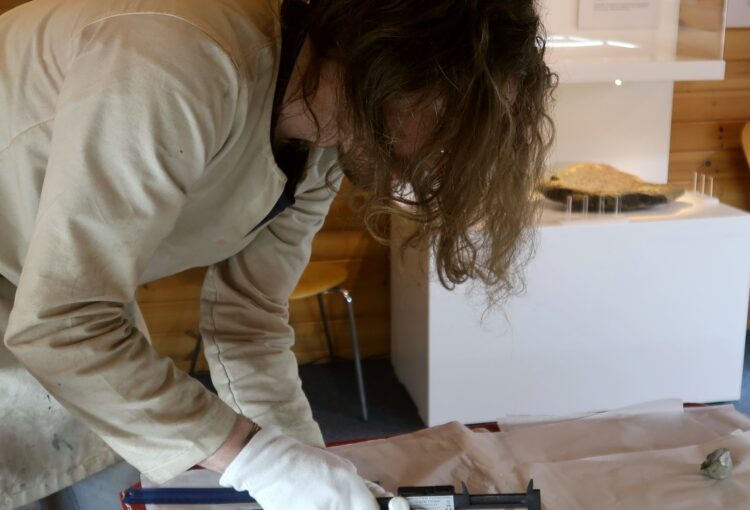Student Blogs – John: ‘An Iron Age Summer’

Hi there everyone, my name is John and I’m currently working at the Crannog Centre as a museum interpreter. It’s been a great way to spend the summer, everyone is really friendly, and I’ve had the chance to do some really interesting things. I usually guide people through the museum and give context to the objects on display from the ancient crannog. Otherwise, I’m working in the technology area, making wire jewellery or learning about Iron Age food and clothing.
I’ve taken part in our (admittedly unsuccessful) attempt to win the tug-of-war at the Kenmore highland games. I also enjoyed the performance of Twelfth Night, that we hosted a few weeks back. What has been really exciting for me was the opportunity to handle and study the objects in the museum, especially the crook-headed, swan necked pin and the crucibles found inside the Oakbank crannog. We’ve been studying the pin to understand out how it was manufactured, and during our Celts Are Coming we will be attempting to cast the pin out of bronze with the help of Neil Burridge; who is the foremost bronze smith in Britain.
To make our reconstructions as accurate as possible, we’ve taken detailed measurements of both the pin and the crucible it was likely cast in. Neil has kindly made his own crucible based off these measurements and will try to create a cast based on the measurements of the pin. We will first have to smelt copper and tin into ingots in the crucible, then smelt these ingots together to create the alloy bronze (a ratio of 90% copper, 10% tin makes the purest bronze).
Once this has been heated to a liquid, we will then pour the molten metal into a mould to create the object- we may have to use the famous “lost wax technique” to create these cast pins, although Neil may have a better method in mind. Once these objects have been sufficiently cooled, we will then file them down so they will be nice and smooth. Finally, we’ll compare these pins to the original Oakbank pin, and try to match the tool marks on the original with our reconstructions.
It will be interesting to see if this is how they created the pin and may help to understand the objects in the museum better. It will certainly be worth seeing!



